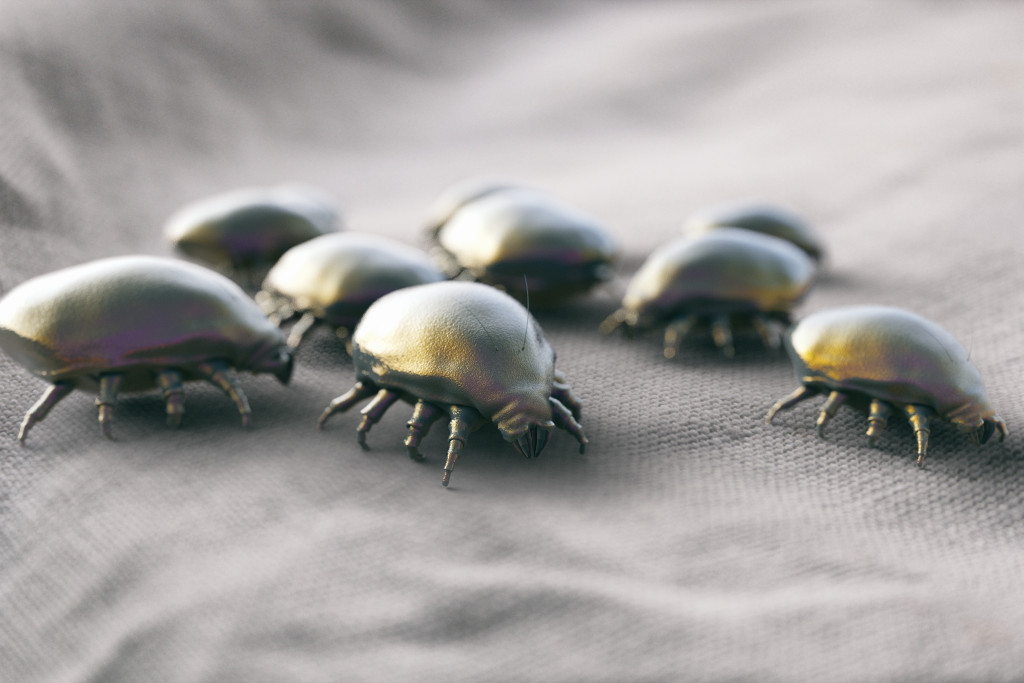Often confused as bedbugs, dust mites are insect-like creatures that thrive on curtains, carpets, upholstered furniture, mattresses, and bedding at home. Unlike bugs, these pests do not leave stings or bites in the body but feed on the dead skin cells they found in dust. On the other hand, they can produce harmful allergens through their own body fragments and fecal pellets.
When exposed to dust mite allergens, a person can experience allergic rhinitis or hay fever, which is an immune system response. In mild cases, this reaction may result in sneezing, watery eyes, and a runny nose. Severe cases can lead to continuous coughing and sneezing, as well as a severe asthma attack and facial pressure. While dust mites naturally appear in almost every home, there are several things you can do to reduce allergens:
1. Clean and dust frequently
Regular cleaning and dusting are crucial, especially if you have babies or little kids that can be more vulnerable to allergens. House dust mites can trigger hay fever with symptoms of sneezing, red, watery eyes, and an itchy nose. If you’re a new parent, we highly recommend cleaning and dusting more often to prevent your baby from being exposed to such health risks. If your baby starts to show any of the symptoms, it’s best to quickly seek professional help for a proper hay fever treatment for babies.
When dusting, it’s best to use a microfiber duster or a damp cloth to clean the countertops and cabinets. You’d also want to vacuum your fabric furniture, carpets, and rugs regularly to ensure that the dust will be sucked in and won’t be flying around the space. If anyone in your family readily suffers from dust allergies, be sure to open the windows and wear a dust mask while cleaning.
2. Make use of hot water washing
For items that needed to be washed, using hot water is enough to get rid of the dust mites living in those bed linens and other soft furnishings. Generally, you’d need to set your washing machine’s hot tub to about 130° F to actually remove the allergens or dust mites. You can wash your bedding weekly using hot water. Just make sure to not get the water too hot as it can potentially fade the colors and damage the fabrics. In case you also use a tumbler dryer, you can set for a hot cycle to eliminate any remaining allergens from the wash.

3. Cut their food supply
Cutting the food supply of dust mites is obviously one of the best ways to deal with the problem. Mattresses and pillows are a bit tough to wash every week. In fact, denaturing powers and sprays aren’t that effective because of the thickness. What you can do is to create a barrier by using special dust mite-proof covers for your mattresses, pillows, and box spring.
It’s highly recommended investing in higher quality covers that can last for more years. By having these covers, you will not be exposed to the dust mite’s feces and shed body parts. You can also kill the dust mites by hanging your blankets and bedspreads outside the sunlight.
4. Try the deep freeze
Another cool way to reduce the dust mite allergens in your home is through deep-freezing. This particular method is effective for small pillows and stuffed toys. The great thing is that this can also act as a treatment if your baby or kids has an allergy to dust mites or has asthma. All you need to do is to place the soft toys in a plastic bag then put them in the freezer overnight. You then wash them to eliminate any remaining droppings or the dead mites.
5. Get rid of your carpet
While carpets can add comfort and ambiance to your space, they are also a favorite spot of dust mites and other kinds of germs. It’s also a good spot for trapping dust and dirt, which something you should avoid if you have little kids at home too. If you are looking to take a larger step into minimizing the presence of dust mites or allergens in your home, it’s best to just get rid of the carpet.
Managing the populations of dust mites in your house can drastically help you protect your entire family’s health and wellness. Keep in mind that these tips for cutting off dust mite allergens in your home require continuous effort as those creatures can always make their way back. In case you still experience any allergic reaction, we recommend you seek the help of an allergist.






